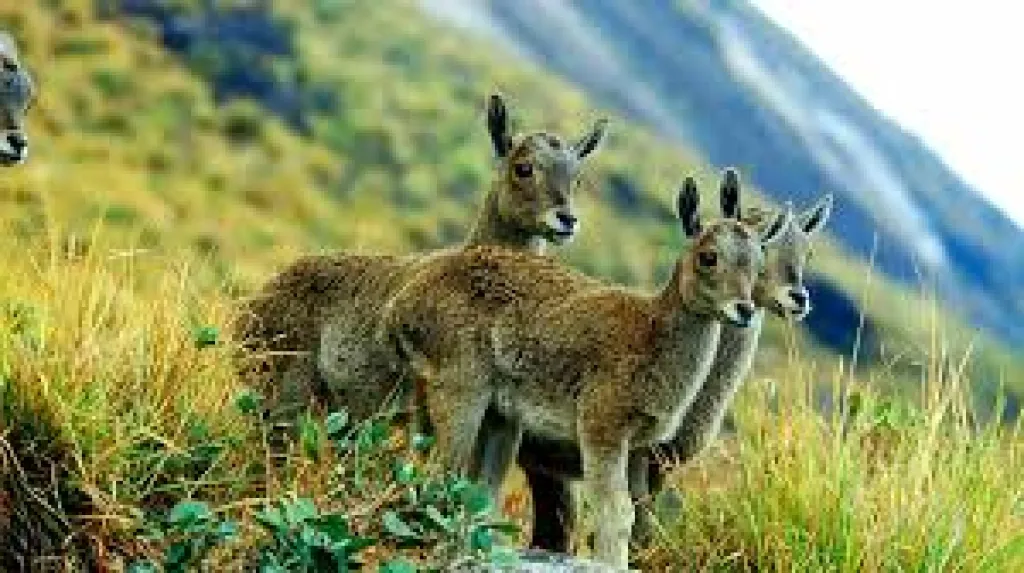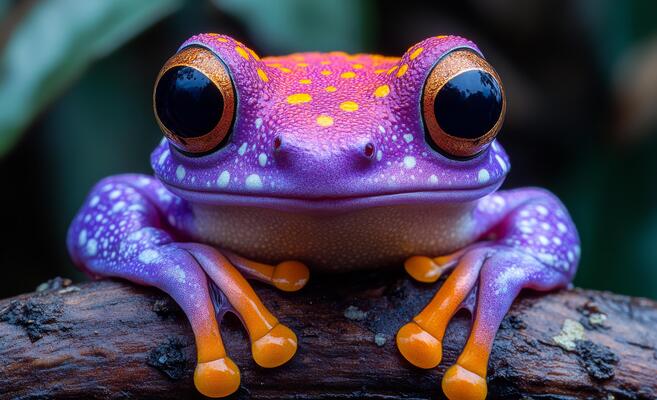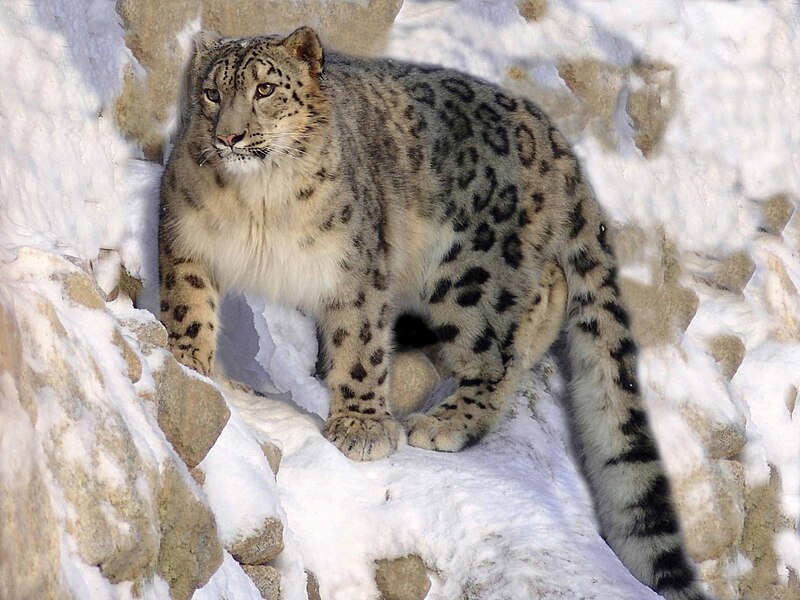10 Most Rarest Animals in India and Where to Spot them!

India, a land where the echoes of the ancient world blend with nature’s purest symphonies, is home to an incredible array of wildlife, some so rare they seem like secrets kept by the Earth itself.
Exploring the country’s forests, mountains, rivers, and grasslands offers travelers a glimpse into a delicate and resilient world.
Here, you’ll encounter animals that are not just rare but carry centuries-old legacies of adaptation and mystery.
Join us on a journey to discover India’s ten rarest animals, each with its own tale to tell, and learn where you might find these elusive wonders.
10 Most Rarest Animals in India and Where to Spot them!
1. Snow Leopard:
Where to Spot: Hemis National Park (Ladakh), Kibber Wildlife Sanctuary (Spiti Valley, Himachal Pradesh)
Best Time to Visit: February to March, when they descend to lower altitudes
What Makes It Special:
Snow leopards are legendary for their elusiveness, often referred to as the “ghosts of the mountains.”
These big cats live in remote, rocky alpine zones, blending seamlessly into the snow and stone with their smoke-gray coats adorned in black rosettes.
Unlike other leopards, snow leopards do not roar; instead, they communicate with a soft, high-pitched call that echoes through the icy valleys.
Only around 500 remain in India, adding to the thrill and rarity of spotting them. Known for their role in regulating prey populations, these majestic animals are vital to the Himalayan ecosystem.
2. Indian Pangolin:

Where to Spot: Forests of the Western Ghats, parts of Madhya Pradesh, Odisha
Best Time to Visit: Dusk or dawn; they are nocturnal creatures
What Makes It Special:
The Indian pangolin, a creature that looks like a cross between an anteater and an armadillo, has scales made of keratin, similar to human fingernails.
They are vital to maintaining balance in their habitats, particularly by controlling insect populations.
Unfortunately, their armor makes them targets for poachers, who hunt them for their scales. Conservation efforts are in place, but sightings in the wild remain rare and enchanting.
3. Lion-Tailed Macaque:

Where to Spot: Silent Valley National Park (Kerala), Anamalai Tiger Reserve (Tamil Nadu)
Best Time to Visit: October to March, during drier seasons when they’re easier to spot
What Makes It Special:
Endemic to the mist-laden Western Ghats, the lion-tailed macaque is instantly recognizable by its silvery mane framing its face.
These intelligent creatures, sometimes known as “beard apes,” spend most of their lives in trees, forming close-knit social groups that communicate through complex calls and gestures.
As seed dispersers, they play a vital role in forest regeneration, ensuring the Western Ghats remain a thriving biodiversity hotspot.
With fewer than 4,000 left in the wild, these macaques are considered one of India’s rarest primates.
4. Kashmir Stag (Hangul):
![]()
Where to Spot: Dachigam National Park, Kashmir Valley
Best Time to Visit: October to April
What Makes It Special:
The Hangul, the only subspecies of red deer in India, is revered in Kashmiri culture. Its magnificent antlers branch out into multiple tines, making it a vision of grace and strength against the Himalayan backdrop.
These animals live in high-altitude meadows, relying on seasonal migrations to survive harsh winters.
Their numbers have dwindled to fewer than 200 due to habitat loss and conflicts. Dachigam National Park remains a sanctuary for the hangul, a vital but fragile population on the brink.
5. Ganges River Dolphin:

Where to Spot: Vikramshila Gangetic Dolphin Sanctuary (Bihar), Chambal River (Uttar Pradesh)
Best Time to Visit: October to March
What Makes It Special:
The Ganges River dolphin, affectionately called “Susu,” is one of the world’s only freshwater dolphins.
Adapted to murky river waters, they rely on echolocation, emitting clicks and whistles to navigate and hunt.
These creatures are pivotal indicators of river health, as they are sensitive to pollution and habitat changes.
Known for their playful dives, Ganges dolphins face threats from pollution, illegal fishing, and dam projects that interrupt their habitat.
6. Sangai Deer (Dancing Deer):

Where to Spot: Keibul Lamjao National Park, Loktak Lake (Manipur)
Best Time to Visit: November to March
What Makes It Special:
The Sangai, or “dancing deer,” lives on the phumdis, floating islands of vegetation in Loktak Lake, a unique feature of Keibul Lamjao National Park.
They seem to “dance” as they move across the floating grasslands, an adaptation that has earned them local reverence as a symbol of resilience.
Manipur’s state animal is a critically endangered subspecies of brow-antlered deer, and the park is the only place in the world where they can be seen in their natural habitat.
7. Red Panda:

Where to Spot: Singalila National Park (West Bengal), Neora Valley National Park (West Bengal)
Best Time to Visit: October to February
What Makes It Special:
The red panda, with its striking russet fur and ringed tail, is a living symbol of India’s Eastern Himalayan forests.
Known for their solitary nature, they feed primarily on bamboo, making them the “vegetarian cousins” of their larger panda relatives.
These adorable, yet elusive animals are highly vulnerable to habitat loss and climate change, and their presence is vital for maintaining forest biodiversity.
8. Nilgiri Tahr:

Where to Spot: Eravikulam National Park (Kerala), Mukurthi National Park (Tamil Nadu)
Best Time to Visit: December to April
What Makes It Special:
The Nilgiri tahr, a rare mountain goat, is perfectly adapted to the Western Ghats’ steep, rocky landscapes.
They’re expert climbers with hooves designed to grip the rugged terrain, allowing them to graze in otherwise inaccessible areas.
Though considered a symbol of high-altitude resilience, habitat fragmentation has limited their range, leaving fewer than 3,000 in the wild.
Eravikulam National Park offers a protected home and a prime location to observe them.
9. Great Indian Bustard:

Where to Spot: Desert National Park (Rajasthan), Naliya Grasslands (Gujarat)
Best Time to Visit: October to February
What Makes It Special:
The great Indian bustard is a striking figure in India’s open grasslands, towering at around four feet and known for its stately posture and graceful movements.
This bird’s dwindling population, reduced to fewer than 200, makes it one of India’s rarest and most endangered birds.
As an apex species, it plays a crucial role in maintaining grassland ecosystems, and its conservation is tied directly to the preservation of India’s remaining grasslands.
10. Purple Frog:

Where to Spot: Western Ghats, Kerala
Best Time to Visit: Monsoon season (June to September)
What Makes It Special:
This bizarre-looking amphibian spends most of its life underground and surfaces only during the monsoon season.
Its unique appearance, a bloated, purplish body with a pointed snout, has earned it nicknames like the “purple frog.”
Believed to have existed for over 100 million years, it’s a living relic from prehistoric times. Habitat destruction threatens their survival, and conservationists consider them a priority due to their limited range.
Conservation Efforts:
These rare species represent the resilience and diversity of India’s ecosystems, from high-altitude deserts to tropical rainforests.
Yet they face constant threats from habitat loss, climate change, and illegal trade. Conservation efforts, ranging from protected areas to breeding programs, are critical to preserving these animals and their habitats.
Visitors can contribute by practicing responsible tourism and supporting local conservation initiatives.
Embarking on a journey to see these rare animals is a life-changing experience that brings you closer to nature’s secrets. By treading softly and respectfully, we play a small but crucial role in ensuring these creatures continue to enchant future generations.
Published at
About Author
Prerna Dixit
Subscribe our Newsletter
Get our weekly tips and travel news!
Related Posts
10 Amazing New Attractions in Singapore - Indian Travelers Guide 2025
Explore the new yet amazing attractions of Singapore
10 Best Beach Resorts in Karwar Karnataka - 2024
Escape to the tranquil beaches of Karwar, Karnataka, where luxury resorts offer a serene retreat amidst nature's pristine beauty.
10 Best Places to Visit in Mahabalipuram, Tamil Nadu
Explore the 10 Best Places to Visit in Mahabalipuram, Tamil Nadu – where ancient temples, rock-cut sculptures, and serene beaches meet!
10 Best Zoos in India: Guide to spot your favourite Animals!
Check out India’s best zoos to spot fascinating animals like tigers, rhinos, and red pandas. Enjoy a fun-filled day while supporting wildlife conservation.
10 Common Mistakes Every Traveler Makes
Indian travelers often overpack, skip travel insurance, and neglect local customs. Embrace light packing, smart planning, and cultural respect for a smooth and unforgettable trip.
Latest Posts
5 Lakes Near Bangalore for Picnic and Day Outings This Weekend
Looking for a peaceful weekend escape? Discover five serene lakes near Bangalore perfect for picnics, scenic drives, and relaxing day outings.
7 Things to Do in Jaipur for First-Time Visitors in 2025
Explore Jaipur in 2025! 7 must-see spots: Amber Fort, Hawa Mahal, City Palace, Nahargarh Fort, Jantar Mantar, Chokhi Dhani, & lively bazaars.
7 Traditional Tea Estates in Assam You Can Visit and Stay At
Wake up to misty mornings and the aroma of fresh tea in Assam’s lush plantations. Stay, sip, and unwind at seven traditional tea estates steeped in heritage and calm.
5 Butterfly Hotspots in South India for Nature Lovers This Spring
From Karnataka’s misty rainforests to Kerala’s eco-parks and the serene Nilgiri hills, explore five breathtaking butterfly hotspots where nature paints her most delicate masterpiece.
5 Heritage Food Walks in Hyderabad for Biryani Lovers
Ready for the ultimate Biryani feast? Discover 5 heritage food walks in Hyderabad to taste the city's royal history and famous cuisine!


